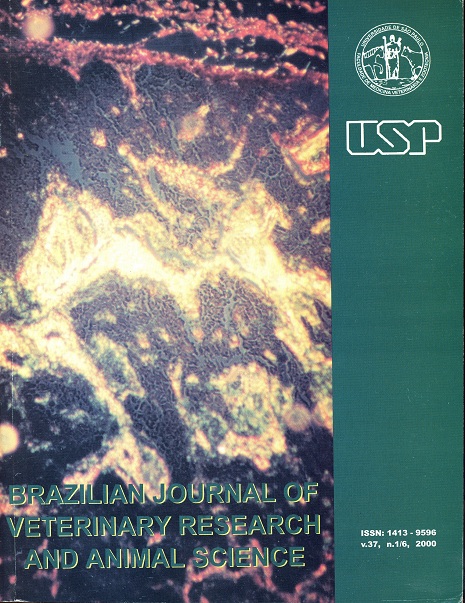Effects of sodium lasalocid and roughage/concentrate ratio on in situ degradability of soybean meal and Coast Cross hay [Cynodon dactylon (L.) Pers.] in dry cows
DOI:
https://doi.org/10.1590/S1413-95962000000300015Keywords:
Ionophores, In situ degradability, Soybean Meal, Hay, RuminantsAbstract
Sodium lasalocid and different roughage:concentrates ratios were studied in a 4 x 4 change over design, with four canulated heifers, weighing 500 kg of average body weight. Treatments were applied in a 2 x 2 factorial arrangement with 40% or 70% of roughage (39% or 59% NDF in the diet) and zero or 200 mg of lasalocid/animal/day. Twenty-one days subperiods were used, the first sixteen for diets adaptation, constituted by Coast Cross hay and concentrate mixture. In situ degradability assay was runned from day seventeen to twenty-one. Statistical interaction between roughage:concentrate ratio and lasalocid was detected over hay NDF and ADF contents (p < 0.05): without lasalocid, less roughage in the diet decreased NDF and ADF degradabilities 12.0% and 12.7% respectively, but with lasalocid the decreasing rates were 7.0% and 4.9%. There were no differences among treatments for protein degradability of soybean meal.Downloads
Download data is not yet available.
Downloads
Published
2000-01-01
Issue
Section
ZOOTECHNICS
License
The journal content is authorized under the Creative Commons BY-NC-SA license (summary of the license: https://
How to Cite
1.
Rodrigues PHM, Lucci C de S, Melotti L. Effects of sodium lasalocid and roughage/concentrate ratio on in situ degradability of soybean meal and Coast Cross hay [Cynodon dactylon (L.) Pers.] in dry cows. Braz. J. Vet. Res. Anim. Sci. [Internet]. 2000 Jan. 1 [cited 2026 Jan. 17];37(3):259-64. Available from: https://revistas.usp.br/bjvras/article/view/5825





